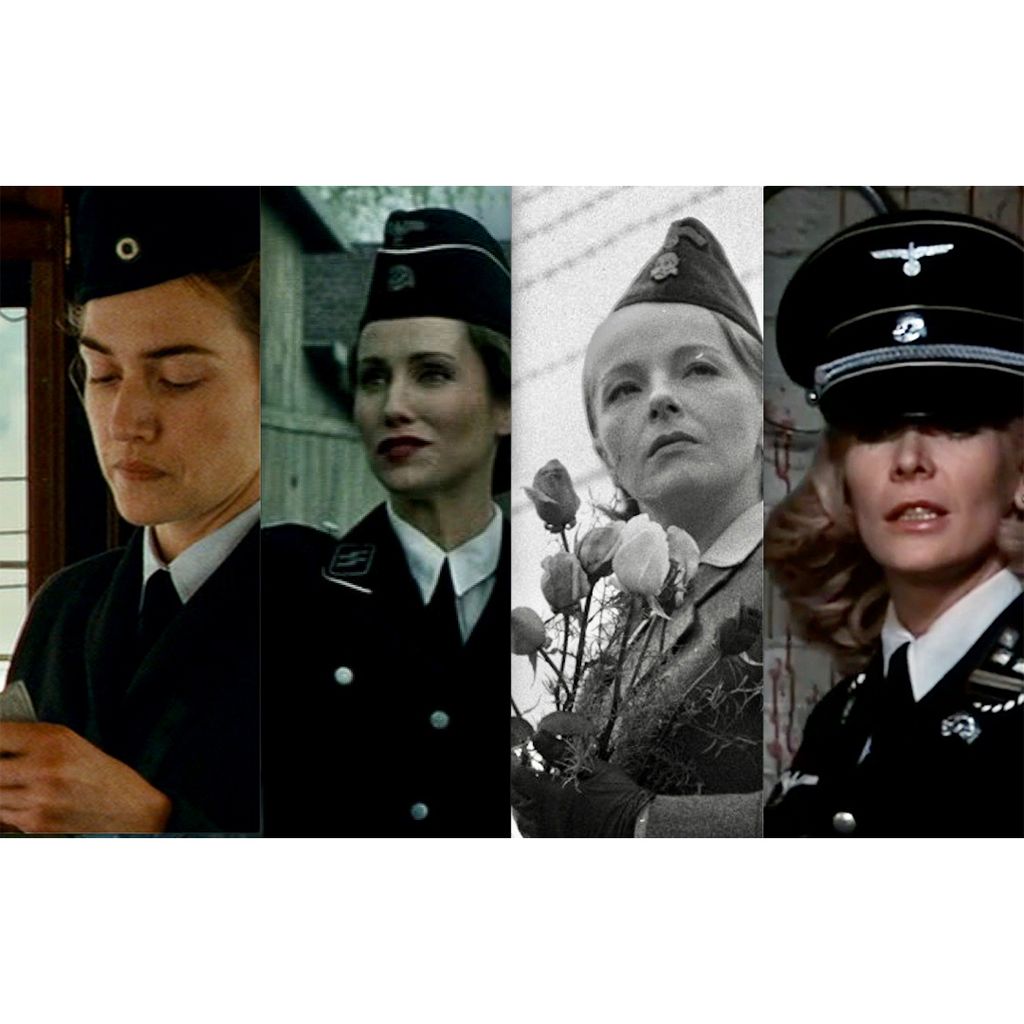The female guard in popular culture
An astonishing number of films, comics and pop-cultural artifacts are dedicated to the theme of the female concentration camp guard. Yet on closer inspection, the multitude of works shrinks to an inflationary cliché consisting of sexual references, allusions to lust, sadism, secret passions – often mimicking the figure of the "Beautiful Beast", as Irma Grese was labeled by the press during the British criminal trials. The concluding chapter of the exhibition is dedicated to those freely circulating images – and their aberrations.
In patriarchy, the exercise of violence by women is considered a particular case, which stands out above all because it contradicts the established power structure. It is no coincidence that female guards were not allowed to wear SS insignia. For in the camp, too, the difference between the sexes was maintained in keeping with the gender hierarchy of the time.
In the exhibition, many forms of violence on the part of the female guards are documented, told by eyewitnesses in interviews, or evidenced through other documents. These scenes of violence, isolated depictions at first, always point at a larger picture. The use of violence enhanced "career paths", signified power, affirmed the National Socialist conviction, and was carried out by women of all social backgrounds and ages. A consistent "figure" of a violent female guard does not emerge.
This makes it all the more important to look at the pop-cultural figure of the female guard, whose erotic charge is repeatedly used as a common brand for “the” female SS perpetrator. This figure is not only problematic because its misogynous stereotype is neither helpful for the analysis of the specific violence at the camp, nor for a more general understanding of the NS 'Volksgemeinschaft' ('people's community'). It is also problematic from a feminist point of view. Is a woman without erotic characteristics an irrelevant subject for the study of NS ideology and its crimes? But also, how can we learn to retrieve and analyze what lays hidden within this flood of images: a body and image politics, that utilizes the history of National Socialism for the sake of its own fantasies, which – as Facebook "fan pages" or other sources show – allow for little to none alternatives beyond the figure of the passionate lover (e.g. "The Reader") and the monstrous, “Beautiful Beast”.

